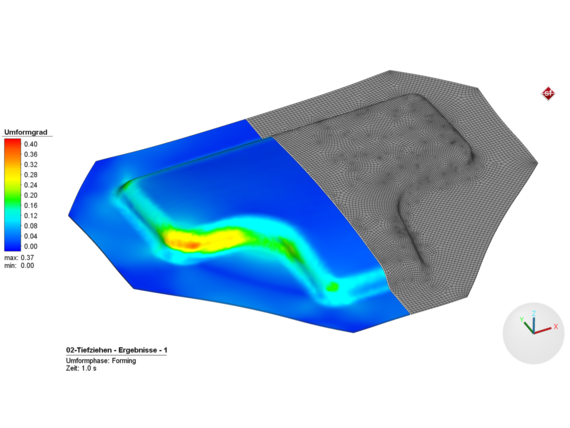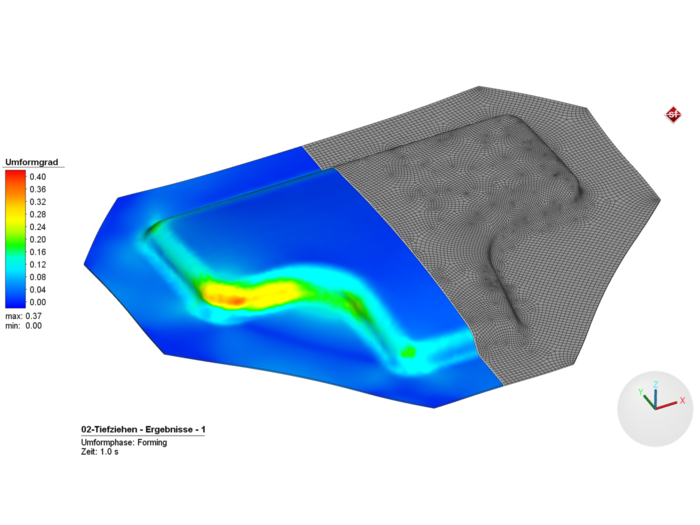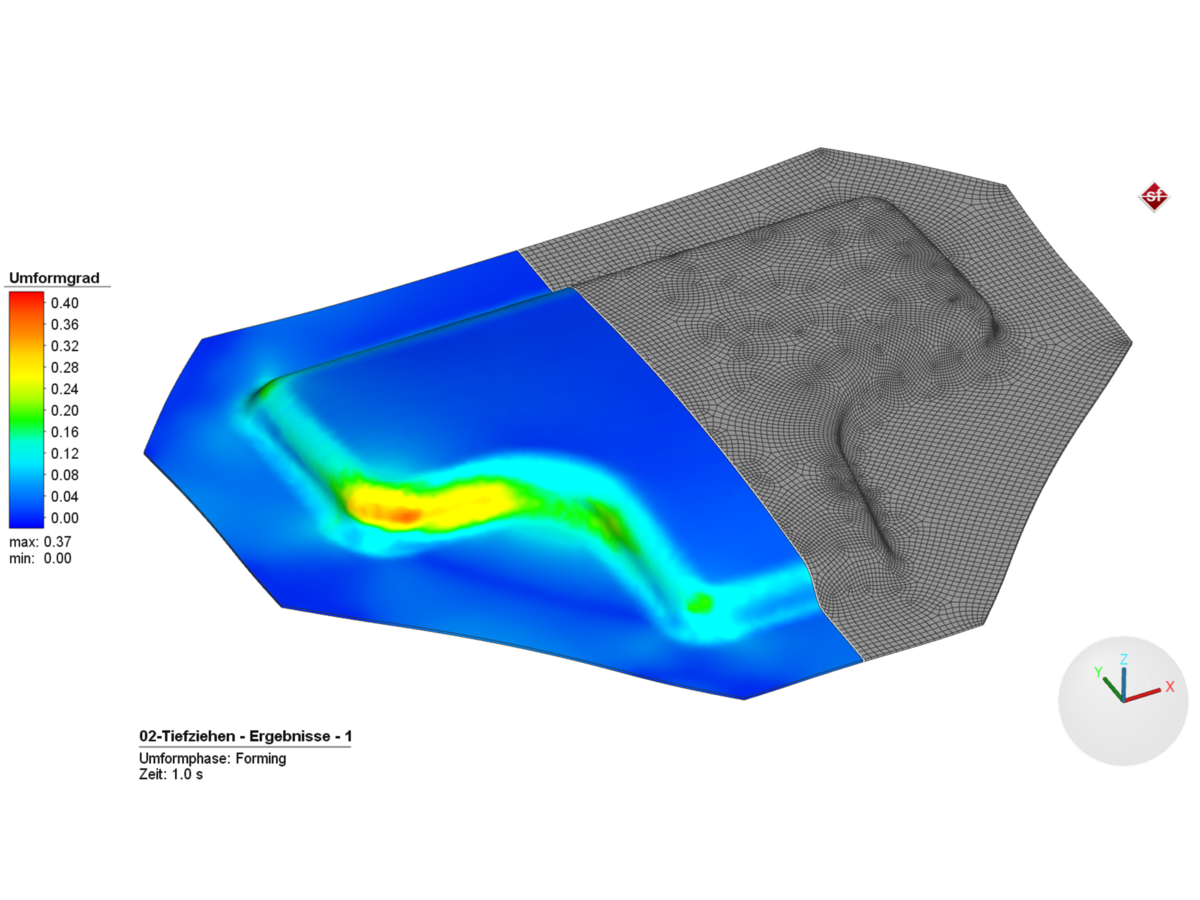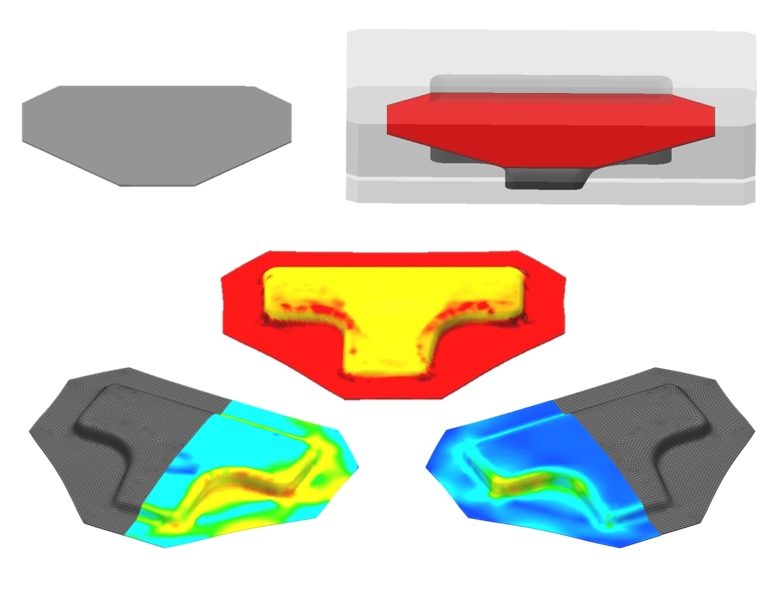Bernd-Arno Behrens, Sven Jüttner, Kai Brunotte, Fahrettin Özkaya, Maximilian Wohner and Eugen Stockburger (2020) Procedia Manufacturing, Volume: 47; pp. 1345-1352.



The use of the finite element method (FEM) in the design and the analysis of press hardening processes can reduce the number of time-consuming and costly practical tests at this stage of product development. In the simulation of hot sheet forming or press hardening, great demands are placed on the simulation systems due to the forming at high temperatures. Here, in addition to mechanical considerations, as in normal deep drawing processes, the thermal interactions between the dies and the blank as a result of heat transfer must also be taken into account. In order to be able to represent these special features in the simulation, thermal-mechanical coupled calculation models are used. Furthermore, suitable models are needed and must be parametrised in order to describe phase changes in the material and calculate resulting part properties.
Publication
Press hardened structural components are a key factor in lightweight car design and thus in reducing vehicle mass while increasing crash safety. The use of quenched 22MnB5 (Usibor 1500) has been established in hot sheet forming for the production of safety-relevant car body components. In order to expand the field of application for press-hardened components, a process-reliable joining technique is essential. Ultra-high-strength components can be joined with other parts in car bodies using the resistance spot welding process. Here, challenges like uneven welding lens formations with an incorrect connection in multi-sheet joints arise. Mechanical joining processes, for example self-pierce riveting, can only be used to a limited extent due to the high hardness of the hardened parts. For this purpose, an annealing treatment is often carried out in order to reduce the strength of the material after press hardening. Another possibility to create softened areas is the introduction of local deformation in the austenitic material. The phase areas in the continuous cooling transformation diagram are shifted to shorter cooling times, which enables the development of deformation-induced ferrite. The local thinning and softening improves joinability by means of mechanical and thermal joining processes but increases the forming force. Therefore, in this study the process of hot forming and local deformation is first pre-estimated using numerical simulation. The required force for the deformation and an optimal positioning, as well as the possible number of deformation punches, are investigated. Furthermore, the first experimental results of the feasibility of locally thinned and softened sheets are presented. In addition, joining tests by resistance spot welding and self-pierce riveting are carried out on the generated specimen to illustrate the practical effectiveness of the local thinning and the use of deformation-induced ferrite for critical joints.























